
Due to scheduled maintenance on April 11th from 7pm – 11pm EST, the NBOME Portal may experience a potential outage.
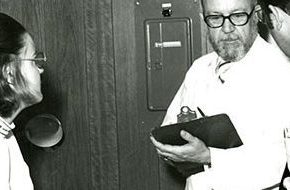
The National Board of Osteopathic Medical Examiners (NBOME), established in 1934 as the National Board of Examiners for Osteopathic Physicians and Surgeons (NBEOPS), is an independent, non-governmental, nonprofit organization. Its primary mission is to protect the public by providing the means to assess competencies for osteopathic medicine and related health care professions, a role that it has steadfastly upheld for nearly a century.

Here you will see highlights from the NBOME’s rich history. Some are excerpted from In the Public Trust: The History of NBOME 1934 – 2009, an in-depth chronology of the organization published in 2009 in celebration of the NBOME’s 75th anniversary.
We dedicate this tribute to the countless DOs, National Faculty, Board members, staff, stakeholders, and patients/public members whose unwavering support and dedication have been instrumental in helping the NBOME meet its mission of protecting the public for the past 90 years.
Prior to 1900, there was limited organized regulation of physicians in the United States. In the early 1900s, states began to create medical practice acts and individual state examinations for physician licensure for DOs as well as MDs.
Charles Hazzard, DO, Arthur G. Hildreth, DO, and Asa Willard, DO, students of osteopathic medicine founder AT Still, DO, recognized the critical need for a profession to self-regulate, to assure practice rights for DOs based on osteopathic competencies, and to assure patient trust in this growing distinct profession within health care in the United States.
Co-Founder and First President of the NBEOPS
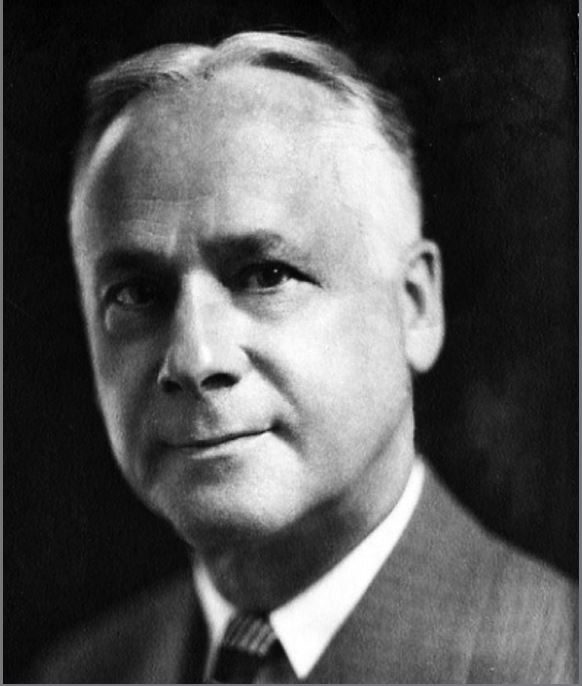
Co-Founder of the NBEOPS
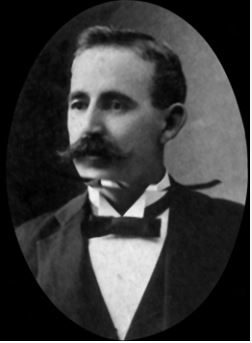
Co-Founder of the NBEOPS and First Secretary-Treasurer
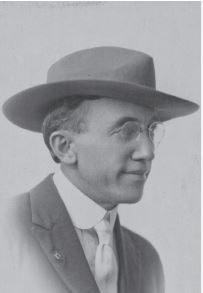
As a result, these osteopathic physicians joined with some other early DOs to found the National Board of Examiners for Osteopathic Physicians and Surgeons (NBEOPS) in 1934. This organization would create a national competency examination with high standards that was acceptable to all jurisdictions and that assessed competencies and content important to and accepted by the osteopathic medical profession.
A graduate of Northwestern University and the American School of Osteopathy’s first class, Hazzard was elected as the first NBEOPS Board President in 1934.
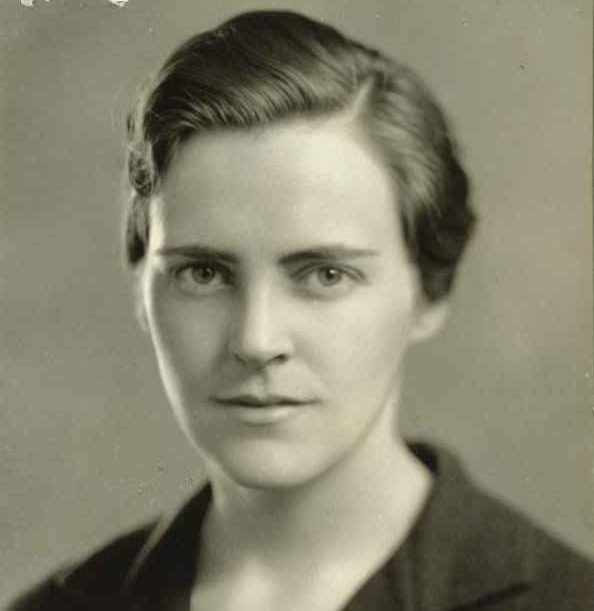

Twenty-eight-year-old Margaret Barnes, DO, another student of AT Still, was the first DO to pass the new national multi-day, essay-based licensure examination in 1936, and did so with high marks. She would go on to serve as an officer of the American Academy of Osteopathy.
The Advisory Board for Osteopathic Specialists was formed in 1939 and was later renamed the AOA-Bureau of Osteopathic Specialists (AOA-BOS). Many leaders from these specialty boards would play pivotal roles in the NBOME’s governance, and NBOME would likewise assist many of these specialties with their examinations.
After a careful review of emerging research that suggested multiple-choice questions could improve on standardized examinations, the NBEOPS transitioned its exams from an essay format to multiple-choice.
The American Association of Osteopathic Examiners (AAOE) was formed at a time when osteopathic medical boards were not eligible to join the FSMB. Many DOs were serving on other state medical licensing boards, and several of them came together and were chartered by the AOA to create a group that would provide osteopathic representation on state licensing boards and would protect the public by ensuring the distinctive practice of osteopathic medicine was supported in physician licensure.
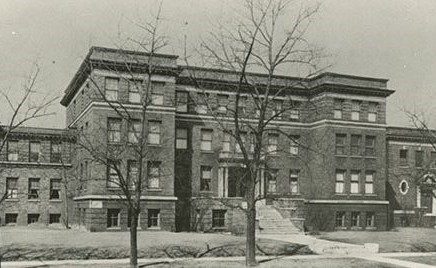
In 1963, the Chicago College of Osteopathy (pictured right) and the College of Osteopathic Medicine and Surgery in Des Moines both requested that the NBEOPS administer exams to all its students. This signified the beginning of a closer relationship between the NBEOPS and colleges of osteopathic medicine (COMs). While there were only five COMs at the time, this event served as a precursor to COMs using the NBOME’s assessments as a quality assurance standard.

With osteopathic physicians now commissioned as physicians in the United States Military and all states except Mississippi (and temporarily, California) licensing DOs for full practice rights, the FSMB modified its by-laws to grant membership to osteopathic medical licensing boards in 1971. In 1973, Mississippi was the final state to license DOs, and the California Supreme Court deemed in 1974 that the MD/DO merger was a restriction of trade, illegal, and unconstitutional.
By 1974, 43 states accepted the NBEOPS three-part examination meeting licensure requirements, eliminating the need for most DOs to pass state individual licensure examinations state-by-state, and helping to fulfill the vision for the osteopathic medical profession had for professional self-regulation and assessment of the competencies for their distinctive profession.
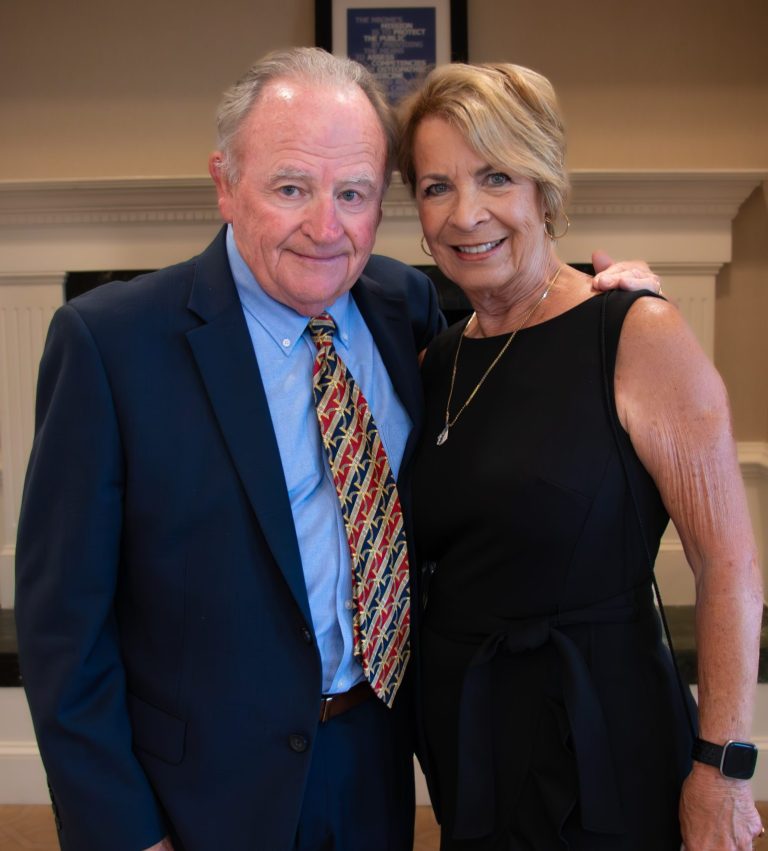

In 1985, Thomas Santucci, Jr., DO (pictured left, with his wife Marlene), a pediatric pulmonologist and faculty member at the University of Medicine and Dentistry of New Jersey-School of Osteopathic Medicine (now Rowan-Virtua School of Osteopathic Medicine), was named NBEOPS Board President.
During his two-year term as president, the NBEOPS underwent many positive developments, such as the enhancement of psychometric rigor and reliability of its assessments, and the transition to a more integrated, clinically based examination program. The Board also further automated processes and Santucci is credited with the expansion of the volunteer base of subject matter experts now known as the NBOME National Faculty.
In 2009, the NBOME instituted the Santucci Award in his honor. It is the organization’s highest award, given to individuals who distinguish themselves with sustained outstanding contributions.
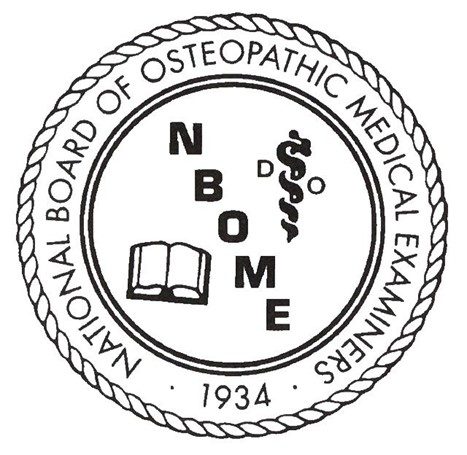
NBEOPS reincorporated as the National Board of Osteopathic Medical Examiners, Inc. (NBOME) in Indiana.

The NBOME established a committee, led by Michael Clearfield, DO, a leading clinical researcher and immediate past dean of Touro University California College of Osteopathic Medicine, to develop a new paradigm for osteopathic licensure examinations.
What they developed was a unique, bi-dimensional blueprint that would form the basis of the licensure examination sequence for the NBOME for the next several decades. The blueprint was patient-centered and based on the ways patients present to osteopathic physicians, and on physician tasks (later “competencies”) that DOs perform in patient care. This new blueprint also integrated osteopathic principles and practices (OPP) throughout the examinations, rather than as a separate section.
The updated exam sequence would also align with the developmental process in osteopathic medical education, with each examination in the series appropriate to the clinical experience starting from the early years in DO school curricular programs through into residency training.
The NBOME worked for the next five years to gather evidence on test development and validity and discussed augmenting the new COMLEX-USA three-level exam with a clinical competency exam using standardized patients. (A previous iteration of the licensure exam had discontinued its clinical exam component with patients in 1983.)
Also during this time, more states began to move away from developing and administering their own examinations for licensure and relied more on national standardized assessments for physician licensure, such as COMLEX-USA for DOs and USMLE for MDs and international doctors (e.g., MBBS).
For the next several years, the NBOME worked to demonstrate the psychometric rigor, fairness, and validity of its COMLEX-USA series of examinations for medical licensure and regularly presented its research to the FSMB and state licensing boards.
Ultimately, after a multi-year, comprehensive review of the evidence for validity for both the COMLEX-USA and the USMLE programs, the FSMB concluded that the evidence for both was exemplary. COMLEX-USA would later be added to the FSMB’s “model practice act” guidelines for use by state licensing boards.
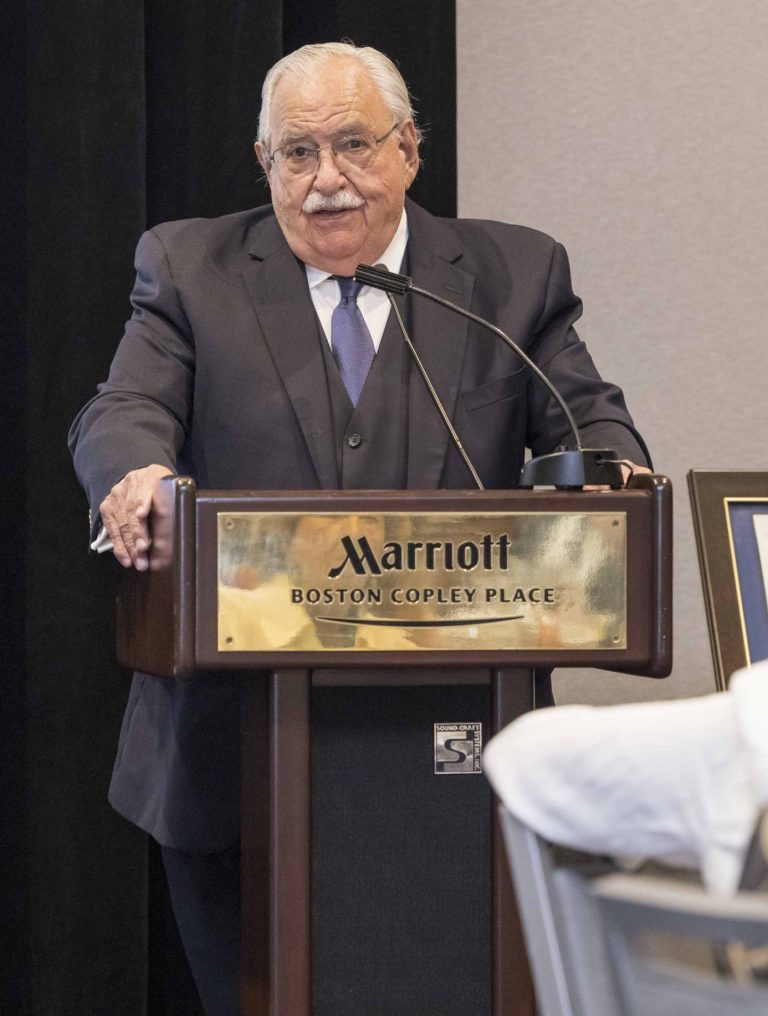

In April 2000, Eugene Oliveri, DO (pictured left), then-president of the AOA and a previous NBOME Board member, was invited to give the annual Galusha Memorial Lecture to the FSMB House of Delegates. It was the first time that a DO had been asked to do so. His work helped contribute to a resolution passed by the FSMB House of Delegates recognizing COMLEX-USA as the valid licensing examination for DOs. Oliveri was awarded the NBOME Santucci Award, the NBOME’s highest honor, in 2022.
The new COMLEX-USA Level 3 debuted in 1995, Level 2-CE followed in 1997, and Level 1 launched in 1998. This allowed DOs to use the COMLEX-USA (the first two levels of which they were taking at their COM) and use it for medical licensure in all the United States and jurisdictions, apart from Louisiana.
Prior to that, many DOs were required to take additional examinations such as the FSMB’s FLEX exam or individual state-based licensure assessments, with the resultant costs of time and expense. It took just over 60 years, but the osteopathic medical profession was now better positioned than ever for professional self-regulation and helping to assure access to quality osteopathic medical care for patients for generations to come.
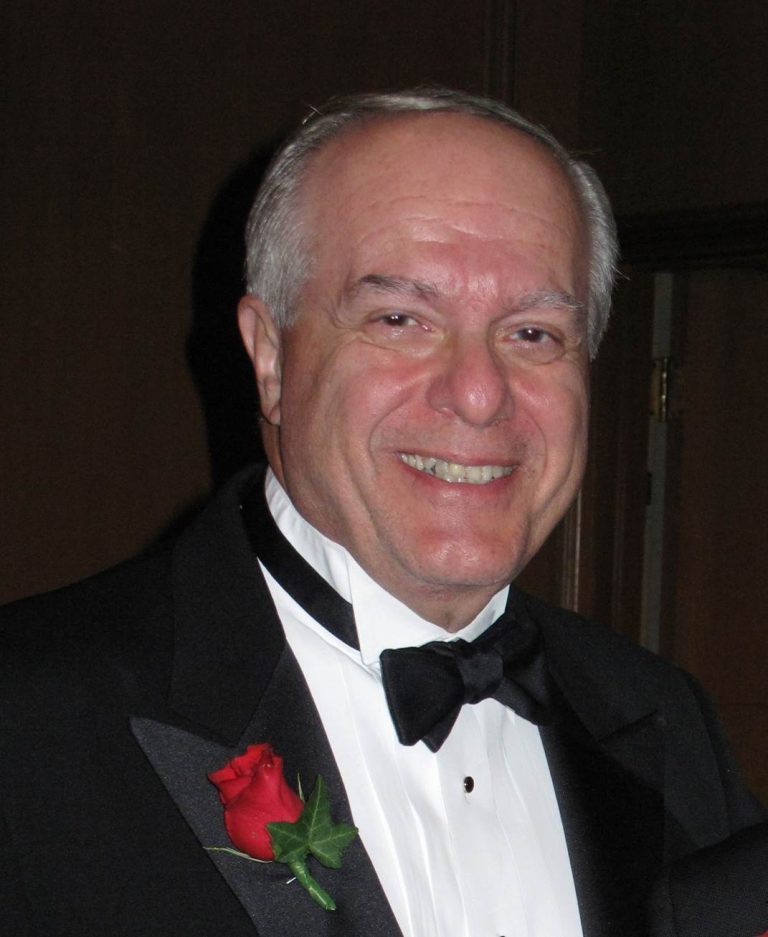
During Meoli’s tenure, the NBOME experienced considerable growth, with the opening of a second national office outside of Philadelphia, the addition of a national clinical skills competency component to COMLEX-USA (Level 2-PE) in 2004, and the transition to computer-delivered test administration for COMLEX-USA in 2005. (Read more about these developments below.)
Frederick G. Meoli, DO, was elected to the NBOME Board in 1988 and served at every level on the Board. He served as Board president (now called Board Chair) from 1999-2001. In 2002, Meoli became the first full-time physician president and CEO, a position he held until his retirement in 2009.

In 2014, the Frederick G. Meoli President’s Award was created in his honor, to be given to a member of the NBOME staff recognized for their outstanding service to the mission of the organization. Meoli was also a recipient of the NBOME’s highest honor, the Santucci Award, in 2010.
In 2004, John R. Gimpel, DO, MEd, then-vice president for clinical skills testing, directed the launch of the COMLEX-USA Level 2-PE, designed to assess clinical skills imperative to the practice of osteopathic medicine. Skills tested included interviewing patients, communication, hands-on physician examination, and osteopathic manipulative techniques (OMT). The first examination was delivered in the new NBOME National Center for Clinical Skills Testing (NCCST), outside Philadelphia, Pa., on September 23, 2004, to 12 candidates.
For the next 18 years, Level 2-PE was credited with contributing greatly to the excellence in professional self-regulation and quality assurance ascribed to the osteopathic medical profession during a time of exponential growth.
In 2005, Louisiana became the final state in the U.S. to accept COMLEX-USA, thanks in large part to the advocacy work of Kim Edward LeBlanc, MD, PhD, a family physician who realized the patients of Louisiana would only benefit from more DOs. In 2005, the Louisiana Practice Act was revised to permit full practice rights to DOs with COMLEX-USA in that state. In 2019, LeBlanc was recognized with the NBOME’s Clark Award for Patient Safety.
In July 2005, years of work by the NBOME, led by Linjun Shen, PhD, MPH, then-vice president for testing and research, and Joseph Smoley, PhD, then-vice president for administration, culminated in the launch of a new, computer-based testing format (CBT) for COMLEX-USA. The new format provided numerous benefits, such as increased test security and the number of test dates available, potential uses of multimedia in test content, and many psychometric advantages.
Drs. Shen and Smoley were later awarded the NBOME’s highest honor, the Santucci Award.
With a growing focus on patient safety and competency assessments and domains for physicians across the house of medicine, the NBOME formed a task force to study the competency issue as it might apply to DO licensure. The work resulted in the publication of The Seven Core Osteopathic Competencies; Considerations for Osteopathic Medical Licensure and the Practice of Osteopathic Medicine in September 2006. It was the first such publication to expand upon the definitions, required elements, and measured outcomes needed to show competency.
The task force defined physician competence as “suitable or sufficient knowledge, skill, experience, values and behavior.” These competencies would continue to undergo review and revision as the practice of osteopathic medicine evolved, and eventually would form the basis for a new master blueprint for COMLEX-USA.
As its reputation for excellence in assessments grew, the NBOME began to take on clients from osteopathic and related health professions, working with them to create customized assessment services. The NBOME partnered with the American College of Osteopathic Family Physicians in 2006 for their resident in-service examination. In 2008, the American Academy of Pediatric Dentistry became the first non-osteopathic organization to work with the NBOME.
As the growth of the profession and demand for DOs continued, the AOA’s Commission on Osteopathic College Accreditation (COCA) modified its existing standards for graduation to require that students pass COMLEX Levels 1, 2-CE, and 2-PE.
This outcome-based quality assurance standard was commended by the U.S. Department of Education and helped to assure the public that every DO has demonstrated osteopathic competencies and meets stringent standards to train in graduate medical education and apply for licensure.
The NBOME had been receiving feedback that students and educators wanted materials to help candidates familiarize themselves with COMLEX-USA format and content. In response, the NBOME launched Phase 1 of the Comprehensive Osteopathic Medical Self-Assessment (COMSAE) in the spring of 2008, closely followed by Phases 2 and 3.
In 2008, audio, visual, and other multi-media test question formats were introduced into COMLEX-USA exams, helping to increase the authenticity and patient-centeredness of the assessments.
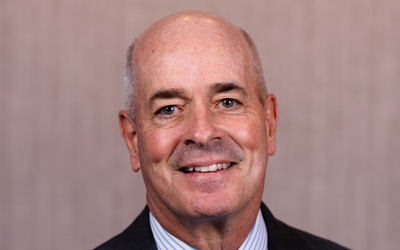
John R. Gimpel, DO, MEd, was first elected to the NBOME Board member in 1995. In 2004, he joined the NBOME staff as its first full-time vice president for clinical skills testing, and its second full-time osteopathic physician on the staff. Prior to that, he was director of predoctoral education and associate professor of family medicine at Georgetown University School of Medicine.
From 2007 to 2009, Gimpel served as dean and vice-president for health services at the University of New England-College of Osteopathic Medicine but was reelected to the NBOME Board. He returned to the NBOME staff full-time in 2009 as the organization’s second full-time DO president and CEO.
The Blue Ribbon Panel was established to perform a comprehensive review and strategic plan for the future of COMLEX-USA. The panel, chaired by future NBOME Board Chair Janice A. Knebl, DO, MBA, evaluated a plan to implement a 2-decision point, competency-based COMLEX-USA, and to address opportunities to continue enhancing the licensing exam program.
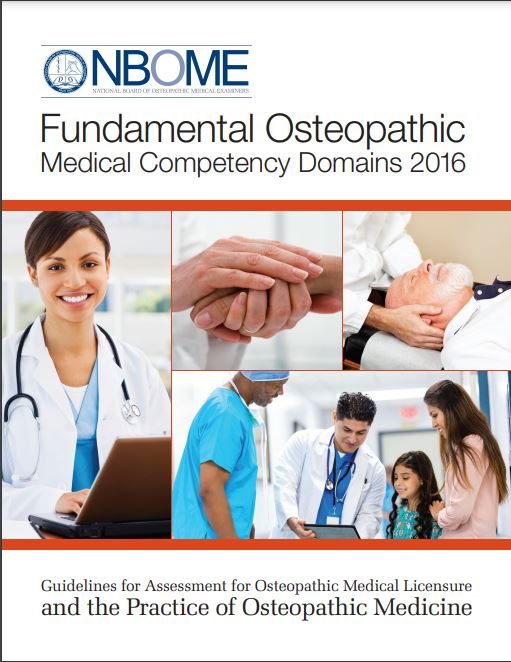
In 2011, the Panel updated “The Fundamental Osteopathic Medical Competencies: Guidelines for Osteopathic Medical Licensure and the Practice of Osteopathic Medicine” (FOMCD).
These updates included adding clinical decision-making test items into COMLEX-USA Level 3, expanding it to two days, and requiring attestation from a residency program director that the candidate was in good academic and professional standing prior to taking Level 3.
The Panel completed its work in 2015, and the following year the current FOMCD was published. These would go on to become foundational to the new COMLEX-USA Master Examination Blueprint.

The Comprehensive Osteopathic Medical Achievement Tests (COMAT) series was launched in 2011 for COMs to assess their students’ competencies in clinical subjects at the end of each course or clinical rotation. Later, COMAT was expanded to include exams in foundational biomedical sciences. Soon, almost all COMs were using COMAT exams to guide learning and osteopathic thinking and provide standardization, educational equivalency, quality assurance, and curricular feedback.
Also in 2011, the NBOME became a charter member of the Coalition for Physician Accountability, an organization formed to identify opportunities for accountability to protect the public, and enhanced communication and coordination along the continuum of medical regulation, including medical education, training, and practice.
The NBOME had been a member of prior coalitions that held numerous summits convening across the house of medicine since 2005, including the Physician Accountability for Physician Competence and the National Alliance for Physician Competence.
The NBOME Learning Center for professional development initiatives launched in 2015, following years of development and internal work with online learning and assessment education. Today, the Learning Center offers educational activities and support to the NBOME National Faculty, to NBOME staff, to COMs associated with the Core Competency Capstone for DOs (C3DO) pilot program, and to physicians in practice with osteopathic continuous certification and continuing medical education modules.
At this time, the AOA and AACOM aligned AOA-accredited residency and fellowship training programs under a new ACGME single accreditation system. Moving forward, all GME programs would have one accreditor that now included for the first time DOs on the ACGME Board and all the review committees, with a promise of codifying osteopathic distinction in the growing enterprise.
This included equivalent recognition of AOA Board certification, AOA-COCA accreditation of schools, and COMLEX-USA licensure assessment, and a new distinction of “osteopathic recognition” for programs that qualified. The NBOME played a role in hosting a series of osteopathic medical regulatory summits to help align the osteopathic medical profession on moving forward, to assure adequate numbers of training opportunities for its growing number of graduates, and to avoid unintended consequences for the profession and for patients.
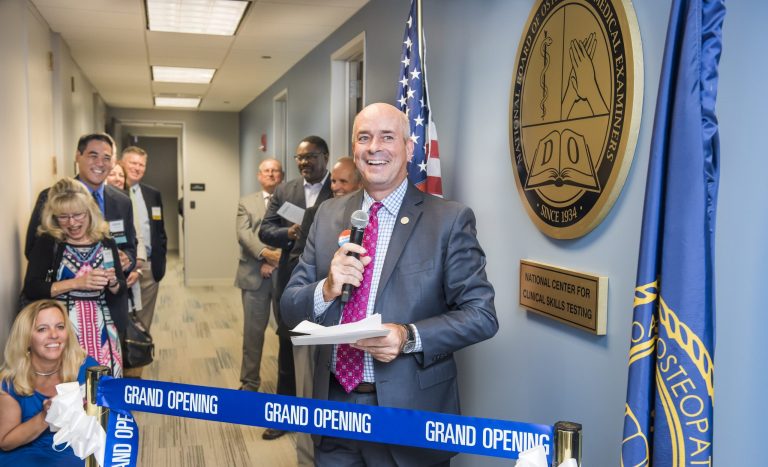
The NBOME doubled its testing capacity for COMLEX-USA Level 2-PE (and for some client exams) by adding the National Center for Clinical Skills Testing (NCCST) – Chicago in 2016. With the significant expansion of new and existing COMs including many in the western part of the US, the new location would help reduce travel and financial concerns for many DO students and expand capacity to test during peak times of the year.
Meanwhile, the NBOME partnered with the National Board of Podiatric Medical Examiners to deliver Part II of its clinical skills patient encounter exam at the NCCST-Philadelphia for licensure to practice podiatric medicine.

CATALYST, launched in 2017, is a formative assessment platform designed as an alternative to traditional student and physician competence and practice-relevant assessment. Initial research in collaboration with three specialties in the AOA’s Board Certification program demonstrated promise in enhancing osteopathic continuous certification.
A five-year, comprehensive review of the COMLEX-USA examination series by the Blue Ribbon Panel resulted in the publication of the COMLEX-USA Master Blueprint 2018-2019. A competency-based framework for licensure assessment, the blueprint was first implemented in COMLEX-USA Level 3 examination in 2018 followed by COMLEX-USA Level 1, Level 2-CE, and Level 2-PE examinations in 2019.The Master Blueprint was lauded by Heidi M. Koenig, MD, editor-in-chief of the FSMB’s Journal of Medical Regulation as a “good example of how medical examiners can update their assessment systems to stay ahead of the curve of change…ensuring quality in medical practice [and] keeping our patients safe.”
The NBOME worked with the American Board of Cosmetic Surgery to deliver its first oral exam for board certification in October 2019 at NCSST – Chicago. The American Board of Physician Specialties followed in relying on NBOME’s assistance. Both organizations continue to administer these examinations with administration and additional services from the NBOME.
At the onset of the COVID-19 pandemic, the NBOME had to pivot quickly yet thoughtfully to continue its mission of protecting the public through valid, fair, and reliable assessments.
All COMLEX-USA examinations were initially suspended in March 2020, and COMAT examinations became available in either a self-proctored or remote-proctored option. This flexibility allowed COMs to maintain some continuity in learning and assessment through the quarantine period. The NBOME testing centers in Chicago and Philadelphia were also closed during this time.
When COMLEX-USA exams resumed administrations, the NBOME worked with its then test administrator, Prometric, to design and implement safety protocols to minimize risks for candidates and staff. Level 2-PE was postponed due to ongoing pandemic conditions and was formally discontinued in 2022. As a result, the NBOME now requires attestation from a COM dean that a student (up to and including the Class of 2027) has the fundamental osteopathic clinical skills necessary to graduate.
In September 2020, the Medical Board of Australia established a new pathway that recognized COMLEX-USA for osteopathic physicians to become registered to practice medicine in Australia. In several Canadian provinces and New Zealand, COMLEX-USA had already been recognized.
When COMLEX-USA Level 2-PE was suspended indefinitely due to COVID-19, the NBOME convened the Special Commission on Osteopathic Medical Licensure Assessment (Special Commission) to conduct a full review of the COMLEX-USA program to ensure that it continued to provide a defensible pathway to osteopathic medical practice and licensure.
At the conclusion of its work, the Special Commission made 10 recommendations to the NBOME Board, which were accepted in June 2022. Among these recommendations was the formal discontinuation of Level 2-PE and the development of a COM-based, osteopathic clinical skills assessment with a national standard.
Also in 2021, the WelCOM assessment tool was launched. Offered on the CATALYST platform, WelCOM provides osteopathic medical students with a platform for formative assessment and learning with content similar to COMLEX-USA. Students are guided with spaced repetition, learning dashboards, and answer rationales for deeper learning and retention.
After several years of negotiations, the AOA partnered with the NBOME in 2021 to use the CATALYST platform for longitudinal assessment for the AOA’s osteopathic continuous certification in 12 specialties, addressing criticism across the house of medicine that traditional recertification/maintenance of certification multiple choice exams were not relevant to the practice of specialists and were too expensive and redundant with continuous professional development requirements.
After several years of analysis and input from across the education, training, and licensure continuum, the NBOME decided to transition in May 2022 from reporting three-digit numeric scores to reporting only “Pass” or “Fail” for COMLEX-USA Level 1. The principal reason was to address growing concerns about student wellness and increasing distraction from their COM curriculum due to overuse of licensing exam scores as filters in residency applications.
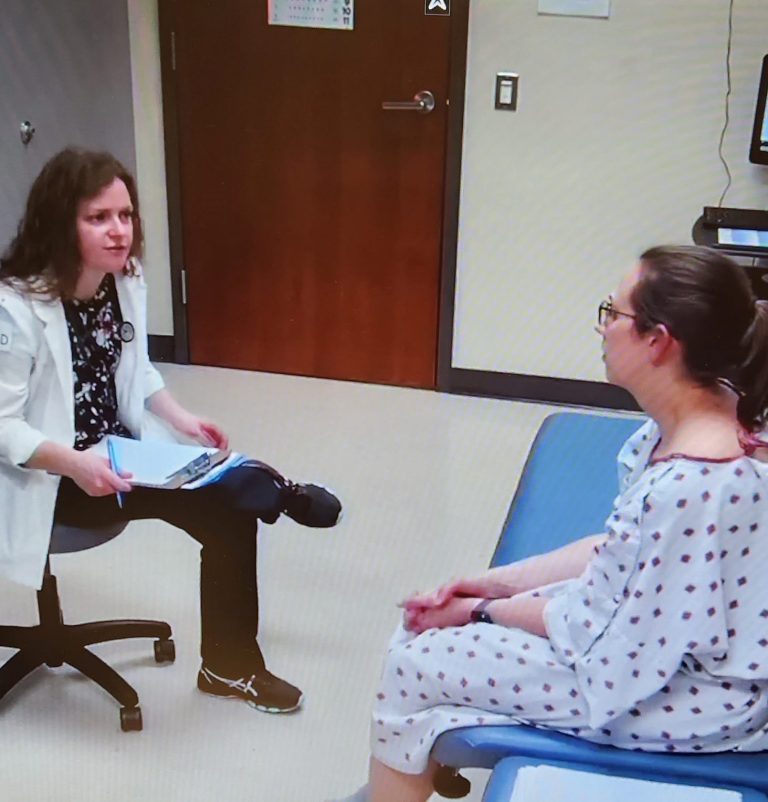
In June 2022, the NBOME Board committed funding to develop and pilot test a core competency capstone for osteopathic medical students (C3DO). A task force was established to provide oversight of the project, and worked through 2023 while the first pilots of C3DO were launched at four COMs on six campuses. Competencies assessed were patient interviewing and communication skills, hands-on physical exam skills, and OMT.
Work on C3DO is ongoing, with eight COMs participating in 2024. Updates can be found here. The Task Force and Advisory Committee are set to present final recommendations to the NBOME Board in 2025.

The NBOME transitioned the administration of its COMLEX-USA Levels 1, 2-CE, and 3 and its COMVEX exams to Pearson VUE’s nearly 300 centers across the US and Canada. The transition offered test-takers a professional, highly secure, and consistent testing experience at a larger pool of locations.
Also, in 2023, six additional medical specialties stood up in support of the value DOs add to residencies and for the equivalent use of COMLEX-USA for DOs in residency applications. They are: Psychiatry, Anesthesiology, Physical Medicine & Rehabilitation, Pediatrics, Ob/Gyn, and Emergency Medicine. Family Medicine stood up for DOs in 2022.
Acceptance of DOs and the COMLEX-USA credential continues to grow internationally as well. Several advances have occurred in Canadian provinces and in India, and DOs recently received global recognition from the International Association of Medical Regulatory Authorities in November 2023. The NBOME is proud of the role it has played in significant advocacy efforts over the past 20 years and remains committed to continuing to play a role in these efforts.
Ultimately, contributions to strong professional self-regulation and advocacy efforts by the NBOME, the AOA, the colleges of osteopathic medicine and AACOM, and others continue to shape a growing profession that remains committed to its distinctive, whole patient-centered, body, mind, and spirit approach to patient care.